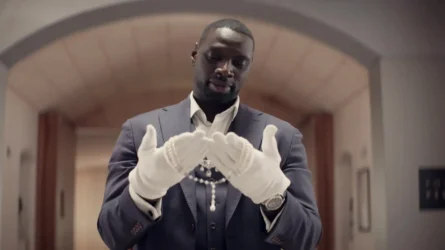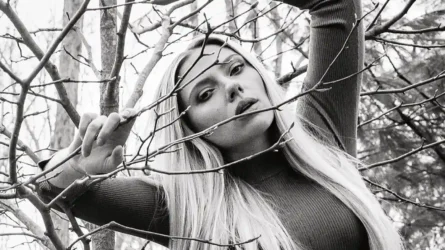Taylor Swift and Social Media
The Making and Marketing of a Global Superstar.
Introduction
Taylor Swift is one of the most successful and influential artists of her generation. Her lyrics often draw on personal experiences, making her songs relatable to millions of “swifties” around the world, but we are going to focus on her social media presence and how she uses these marketing channels to promote her work. Our discussion will also explore issues around participatory media, regulation and industry context.
Contents
Building a Brand
Taylor Swift has always used social media platforms to raise her profile and construct an audience for her music. Her MySpace page was full of informal snapshots of her school life, kittens and teenage thoughts. In the about section, she tells the user her “toenails are painted 5 different colors” and she loves “surprises and hardwood floors”. She also warns “guys don’t ask me out because they know I’ll write songs about them”.

Of course, you could listen to her tracks in the music section.
And there was plenty of marketing, such as hypermedia links to Taylor’s store to buy merchandise, a call-to-action to sign up to her email list for pre-sales and exclusive offers and buttons for users to vote for Taylor as their favourite female artist.
According to Henry Jenkins, fandoms are social entities with audiences engaging intensely with media texts to construct their own meanings and interpretations beyond the original messages.
Blurring the boundary between the professional producer and audience, MySpace gave Taylor’s fans the opportunity to use their cognitive surplus and build their own fansites where they could upload images, share experiences and discuss the singer’s performances.

Taylor quickly developed a reputation for hiding clues in her posts about upcoming shows and projects. Known as “Easter eggs”, this playful engagement with the audience reinforced the sense of community the singer was eager to build on MySpace: “I’m a fan of fans. You are absolutely wonderful to me. I’ve got your back, just like you’ve had mine”.
Plugs and Personal Relationships
Her approach to social media has evolved along with her career, reflecting both her creative journey and her desire to control her public image.
Taylor continues to upload plenty of promotional content to her social media channels to generate interest in her work. There are the traditional sales pitches encouraging her audience to listen to a new song or watch her latest video. This beautiful production still was taken on the set of Willow (2020):

The post directed her millions of followers to the YouTube Premieres page where they could experience the music video together in real time and interact with Taylor in the chat feature.
According to the uses and gratifications theories, consumers are motivated to engage with media texts because they appeal to our need for personal relationships. This sort of live interaction with Taylor creates a strong sense of community among fans and makes them feel part of a larger movement and story.
The Selfie
Taylor Swift deepens the connection to her fans by sharing some personal moments. She uploaded this old photograph to celebrate her thirtieth birthday with the caption “who’s gonna tell her she is thirtay now”.
These little glimpses into her life help break down the barrier between her public identity and private world to make her more relatable to her audience because the mode of address is direct, open and candid.

Live Performance
Performance photos are a great way for Taylor to highlight her incredible presence and energy on stage. The following image was captured in Edinburgh during The Eras Tour:

It is common practice for the credentialed photographers to be briefed on Taylor’s set so they can anticipate her position on stage, the lighting design, costume changes, use of pyrotechnics, and other aspects of the production. They can then begin to work out how to achieve specific shots and have the right lenses ready.
This photograph was taken by Gareth Cattermole for Getty Images – a media company who supply stock images and create visuals for brands.
These epic shots of her performance are carefully planned and crafted to evoke awe from the viewer. The concertgoers at Murrayfield will see the terrific image and remember the excitement they felt that evening and appreciate her heart-felt thanks in the caption. It will also raise expectations in other fans who have tickets to the next leg of the tour.
The Advocate
Taylor does use her reach to speak out against injustice and advocate for change. For example, she joined the #BlackoutTuesday campaign to show solidarity with the Black Lives Matter movement in 2020 and raise awareness of systemic racism in society.
Some activists argued support should go beyond symbolic gestures and include concrete actions to fight racial injustice.
Ten days after the black square, Taylor posted criticism of monuments in Tennessee that celebrated “racist historical figures who did evil things” and “perpetuated hideous patterns of racism”:

There has been a broad push around to world to reassess how we memorialise history, especially individuals whose actions were deeply harmful. In 2015, students at the University of Cape Town in South Africa campaigned to remove a prominent statue of Cecil Rhodes, a British colonialist, from their campus.
Inspired by the success of the Rhodes Must Fall protest, other students pushed for the removal of statues that commemorated legacies of oppression and inequality. In 2020, a few days before Taylor’s post, demonstrators dragged a statue of Edward Colston through the streets of Bristol and pushed it into the harbour to protest against his involvement in the transatlantic slave trade. Taylor Swift added her own voice to this movement.
She also retweeted Michelle Obama’s response to the Supreme Court’s decision to overturn Roe v. Wade and added she was “absolutely terrified” by the ending of federal protection for a “woman’s rights to their own bodies”.
Critics of the controversial decision argue it undermines gender equality by forcing women to carry pregnancies to term against their will or when there is a serious risk to their health. Her tweet positions the audience to reject the decision of the judges and fight for autonomy.
The cultivation theory suggests the media can influence our perception of the world. Perhaps heavy users of social media who follow Taylor will begin to align their values and attitudes with hers.

The Opinion Leader
Taylor Swift is a powerful opinion leader with a dedicated group of opinion followers in her digital network who trust her views on the world. That’s why politicians and brands are so eager for her endorsement.
She has worked with Diet Coke since 2013. Announcing the partnership on her YouTube channel, Taylor told her followers was excited to be working with “one of the great loves” of her life. For another look at media effects theory, read our analysis of one of the first print advertisements in the campaign.
She supported Biden’s run for president in 2020 and lent her protest song Only the Young (2020) to his campaign. According to a study conducted by Whitman Insight Strategies and MRC Data, Taylor was the second most influential celebrity who helped raise awareness of the election among the voters. LeBron James was first.
After plenty of media speculation and pressure, she declared her support for Kamala Harris, the Democrat nominee, in the 2024 presidential election on Instagram:

The BBC reported nearly 340,000 people clicked her custom link to access the registration website, vote.gov, within 24 hours of the post. It also inspired activists to establish the Swifties for Kamala campaign group and motivate other fans to go out and vote.
The two-step flow theory of communication suggests opinion leaders interpret the messages from politicians and then filter that information to opinion followers in their social groups. The way Taylor influenced people’s attitudes and decisions is a great example of this theory in practice.
Incidentally, the image was taken by Inez & Vinoodh, the photographers behind the cover of The Gentlewoman issue we analysed for the AQA specification.
The Public Sphere
Jürgen Habermas (1962), a German philosopher, described the public sphere as place where people can engage in debate and form collective opinions that influence political actions and decisions. Unfortunately, misinformation and fake news can spread easily on social media, making it harder for individuals to have informed and rational discussions on important topics.
Social media posts are signifying processes. Taylor Swift constructs a compelling tone of authenticity in the image and caption section of the previous example, but the audience might need to be aware of the allusions to decode the message.
Her “fears around AI” and “the dangers of spreading misinformation” are in response to the AI-generated image shared by Donald Trump on his Truth Social platform which depicted the singer as an Uncle Sam figure calling on patriotic voters to rally around the former president.
She signed the post “Childless Cat Lady” to emphasise her independence and poke fun at the Republican vice-presidential candidate’s nasty remarks about Democrats.

It’s also worth noting false rumours were circulated by clickbait news agencies and Facebook groups claiming Coca-Cola had dropped Taylor after she endorsed Harris despite the original story being labelled as satire by its authors.
Cross-posting
In terms of followers, Taylor Swift’s social media statistics (Nov. 2024) are incredible:
- Instagram: 283M
- Twitter/X: 94M
- Facebook: 80M
- TikTok: 33M
She also gets tens of thousands of notes on Tumblr and keeps a basic presence on Snapchat.
Although the platforms have their own audience and conventions, she regularly shares the same content across her socials to maintain a consistent message and brand identity.
Hundreds of millions of fans follow her socials. Taylor Swift follows no one.
Social Media and Regulation
Lunt and Livingstone (2012) believed governments have “pressing choices” to make sure the different modes of regulation are “protecting consumer interests, facilitating citizen interests and creating the conditions for competitive markets”.
Social media networks enable users to share ideas and voice opinions with the world. Regulation can help protect the freedom of expression of consumers. Regulators can also set standards to prevent the spread of harmful or offensive content that is damaging to the interests of the citizen. The companies make money by trading our data and selling advertising space in our feeds, but regulation can help ensure the personal privacy and dignity of users.
Our transnational culture makes the balancing of these competing priorities even more difficult.
Self-regulation
It is impossible to regulate billions of images and comments before they are published online, so sites use a combination of machine algorithms and human judgement to moderate content after its posted.
Meta implements their own Community Standards across all their platforms: Instagram, Threads, Facebook, and Messenger. Their goal is “to create a place for expression and give people a voice”. It is important for users to be able to voice their opinions and share their ideas with the world. Regulation helps to protect that democracy.
However, the company is also aware of their responsibility to cultivate a safe space for expression and “remove content that could contribute to a risk of harm to the physical security of persons”. For example, several Threads accounts were suspended because they tracked Taylor Swift’s private jet and violated her personal privacy. These accounts drew attention to the hypocrisy of wealthy individuals who claimed to care for the environment but were emitting significant amounts of greenhouse gases each time they took a flight. Although the information was publicly available, the doxing threatened the physical safety of the singer and Meta had to fulfil its safeguarding promise by suspending the accounts.
Meta uses AI models to detect and remove harmful content that violates their community guidelines. Their image and text recognition tools scan posts for inappropriate patterns and language. The algorithms also look for suspicious behaviour from spammers and bot accounts to prevent trolls from uploading abuse and misinformation.
Some content is sent to human moderators for review. These teams will evaluate the posts and intervene if necessary. For example, shadowbanning is when you are allowed to upload content, but you may not appear in the search results, hashtags, or feeds of follows. Some critics argue this approach is concerning because users are not formally notified that they have been censored and it could be used to supress certain viewpoints.
Despite claiming they do not follow the practice, social media platforms do admit to limiting the visibility of certain types of content. They will also allow posts which go against their standards if it is in the public interest. Regulation is always a difficult balance between free speech and the need to protect users.
Users and Privacy Settings
Social media is great platform for building positive communities and giving users a voice, but it can also attract vicious trolls. The abuse directed towards Taylor Swift has been relentless. The singer hit back in You Need to Calm Down (2019) with the lyrics “Say it in the street, that’s a knockout / But you say it in a tweet, that’s a cop-out”.
The song also contains the line “snakes and stones never broke my bones”.
In 2016, The Sun newspaper reported that several high-profile accounts on Instagram were trialling a new system to prevent and delete abusive comments. This may have given Taylor Swift’s team the ability to clean up her feed, including the removal of the snake emoji which users were posting to suggest she was being deceitful in her feud with Kanye West.

You cannot stop trolls from posting terrible comments, but you can limit engagement to your followers or hide responses that you feel are inappropriate. Unwanted direct messages (DMs) can also be blocked in your privacy settings. Taylor Swift has gone a step further and turned off all comments on her posts. This gives her complete control over the conversation on the image sharing site.
YouTube has similar setting where users can automatically turn off comments, especially if the content was made for kids, but Taylor’s official channel still enables users to comment.
Instagram is often used for more direct interaction with fans. However, the comment sections can quickly become toxic, especially during controversial moments in an artist’s career. Disabling comments helps Taylor avoid negative discussions and spam.
Perhaps the audience on YouTube is more focused on her music so commentors are reacting to her work rather than posting remarks about her personal life. Leaving the comments open could also be a way to boost engagement metrics and maintain her profile on the platform.
Community Regulation
Another good example of regulation is the “snark sub” r/travisandtaylor on Reddit – a space for critics of Taylor Swift to take an oppositional reading of her social media presence and voice their opinions on the singer and her ethics. The top post of all time is a criticism of Taylor Swift’s use of her two private jets in 2023. It received 35k upvotes and over 2k comments. The subreddit was particularly scathing of the number of variants she released for The Tortured Poets Department, even suggesting she was deliberately manipulating the charts to keep rivals from claiming the top spot.
The moderators (mods) of the sub are unpaid volunteers who are tasked with keeping the discussions civil and respectful by removing offensive content, inappropriate material, and trolls.
They are also wary of brigading with some users raising concerns about Taylor Swift fans invading the subreddit to downvote comments, damaging the karma dynamic, and interfering with the community of over 130k members.
You will also see this sort of community regulation on Facebook groups where admins can approve posts, manage membership, and delete any content that breaks their rules. Some of these groups are especially useful for buying and selling merchandise because scalpers are quickly removed by the admins.
External Regulation in the UK
Parliament passed The Online Safety Act in 2023 to make services safer for users. Applying to any site that allows people to share content and interact with each other, the new regulatory framework requires companies to remove illegal content and implement age-checking measures to protect young people from harmful content.
Sites have a duty to carry out risk assessments and provide a clear and accessible process for users to report problems.
The law also gave Ofcom the authority to issue codes of practice and enforce the requirements. Their role is to make sure social media sites have appropriate systems in place to protect their users. Importantly, the responsibility for removing online content or accounts still lies with the provider. If a user experiences something online that is harmful, they need to raise a complaint with the online service first.
Economic Pressure
Social media platforms and other sites need to create the right ambience to attract advertisers and remain viable businesses. They are under pressure to ensure content published by users does not detract from the messages brands want to communicate to their target audience.
Research by the data firm, Kantar, found that “26% of marketers were planning to cut back ad spend on X in 2025” because companies were worried about “brand safety in that environment”.
By pulling budgets, advertisers can put pressure on social media sites to regulate content. Perhaps market forces are a stronger influence on content moderation than any duty of care to users.
The Attention Economy
Social media companies make money through selling advertising. They are collecting huge amounts of user data (browsing history, location and demographic information) which enables them to deliver advertisements to specific audiences. The platforms can charge premium rates because advertisers are reaching consumers who are more likely to respond positively to their brand’s message.
The next time you are flicking through Instagram and TikTok, pay attention to the ads appearing between genuine content pieces. Think about the pre-roll ads that you skip before you watch a video on YouTube. And then critically assess how the advertisers are managing to connect with your values and interests.
Herbet Simon (1971) said “a wealth of information creates a poverty of attention”. The psychologist was referring to how attention was a limiting factor in processing messages and making decisions in our information-rich world.
Social media sites generate revenue by commodifying our attention. You are the product being sold to advertisers each time you see a sponsored post beside Taylor Swift’s latest upload on Instagram.
Curran and Seaton (2018) noted how the media has “always monetized attention” and “their real economic purpose was to sell audiences”. Corporations in the cultural industries are driven by profit. Social media platforms, such as TikTok and Instagram, rely on users to create content. With over 280 million followers, Taylor Swift is a significant symbol creator who helps the platform make money by trading our attention with advertisers.
The singer benefits from this relationship because she can control her public image and brand identity in a way that resonates with her target audience. She can also promote new projects directly to her fans who are eager to buy her next album – or variant.
Artificial Scarcity
It is worth drawing attention to David Hesmondhalgh’s (2012) thoughts on artificial scarcity and how “firms have to achieve the scarcity that gives value to goods by limiting access to cultural goods and services by artificial means”. Taylor created a sense of urgency by limiting the time fans had available to purchase some of the variants of The Tortured Poets Department.
In this example, the singer released a variant of the album with a different cover and a bonus track called The Bolter, but you only had 80 hours to get the record.

Playing into our fear of missing out, Instagram also makes use of artificial scarcity by limiting stories to 24 hours if you don’t save them to your highlights. This is another effective way to attract our attention and drive user engagement.
Patterns of Ownership
The mass media we consume is controlled by conglomerates and collaborations between large corporations. We have already seen how Meta owns three popular social media platforms: Facebook, Instagram and Threads.
Curran and Seaton (2018) explored the patterns of ownership in the cultural industries and were concerned the “victims of media concentration are variety, creativity and quality”. Some trolls have twisted the nickname “blondie” into “blandie” to criticise Taylor’s mass appeal.
In terms of social media, Curran and Seaton emphasised how “our feelings and sensibilities can be manipulated by algorithms… in ways that feel natural and personal”. Perhaps we should evaluate to what extent the values and ideologies of Twitter/X seem to be controlled by one man.
Final Thoughts
Social media networks offer tools to analyse audience demographics and track engagement which helps Taylor’s team understand what works and make data-informed decisions about how to target her audience.
Fans can enhance their experience of her music and feel part of a larger movement, especially with the opportunities to interact with their idol.
By tagging her collaborators in the posts, such as the photographers behind the images, Taylor is also building stronger connections in the industry.
However, social media is not without problems. Taylor Swift’s Instagram account was hacked in early 2015. She responded to threats with “Cause the hackers gonna hack, hack, hack, hack, hack…”
Discussion Questions
- Media products often challenge the social and cultural contexts in which they are created. To what extent does an analysis of Taylor Swift’s online presence support this view?
- How does Taylor Swift use different social media networks to target different audiences?
- To what extent do social media users have the power to shape the audience’s thoughts and behaviour?
- Media producers attempt to encode specific messages to audiences, but we are free to interpret texts in a variety of ways. How valid are reception theory’s claims about audience responses?
- “While fan cultures are often positive spaces, online media can also give rise to toxicity.” To what extent do you agree with this statement?
Bibliography
Curran, James & Seaton, Jean (2018) Power Without Responsibility. Routledge.
Habermas, Jürgen (1962 trans 1989) The Structural Transformation of the Public Sphere. Polity.
Simon, Herber A. (1971) Designing Organizations for an Information-Rich World. The John Hopkins Press.
Hesmondhalgh, David (2012) The Cultural Industries. Sage Publications
Lunt, Peter & Livingstone, Sonia (2012) Media Regulation: Governance and the Interests of Citizens and Consumers. Sage Publications
Keep Revising
Get exam-ready with resources and guides designed specifically for the AQA A Level Media Studies specification.







